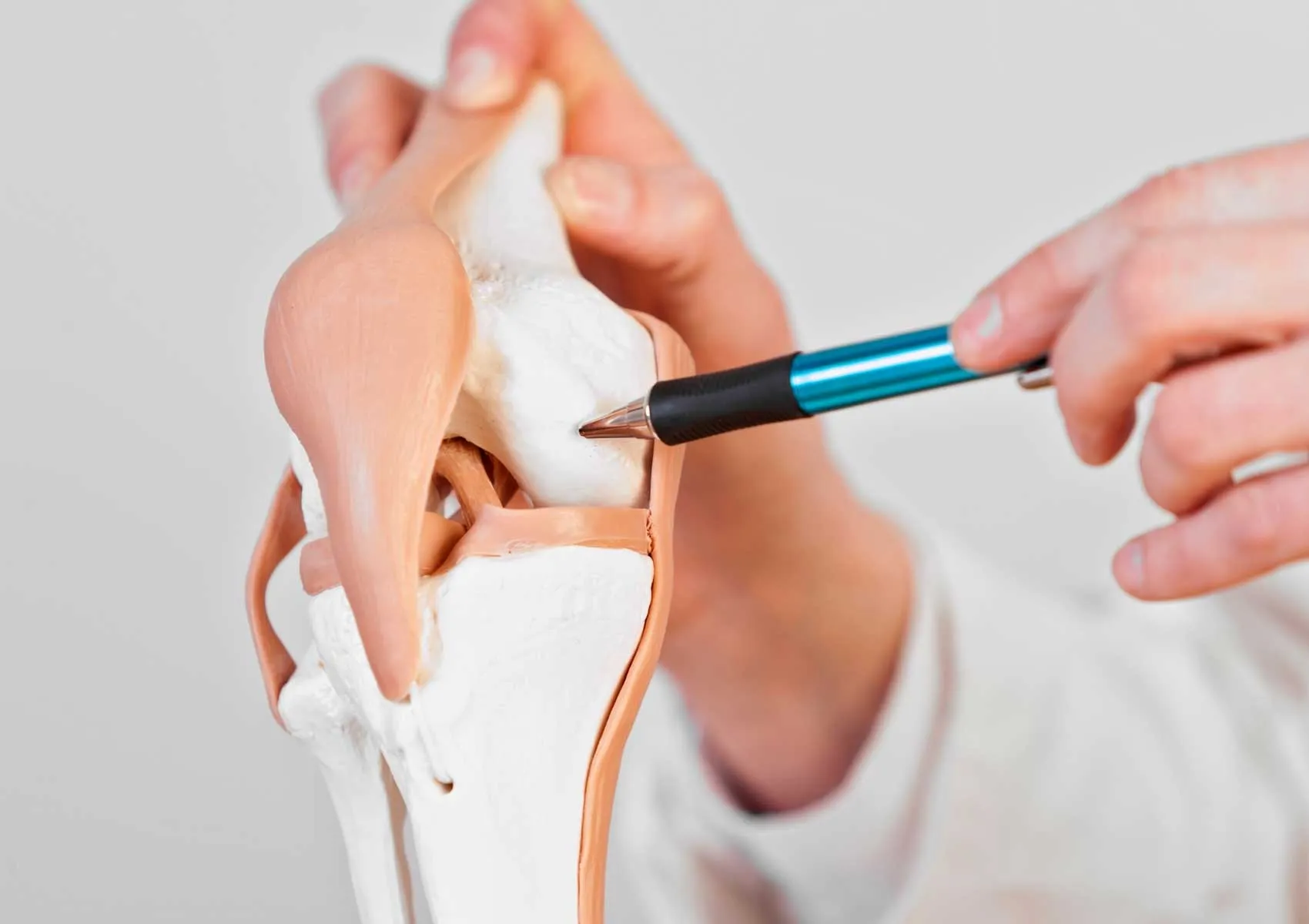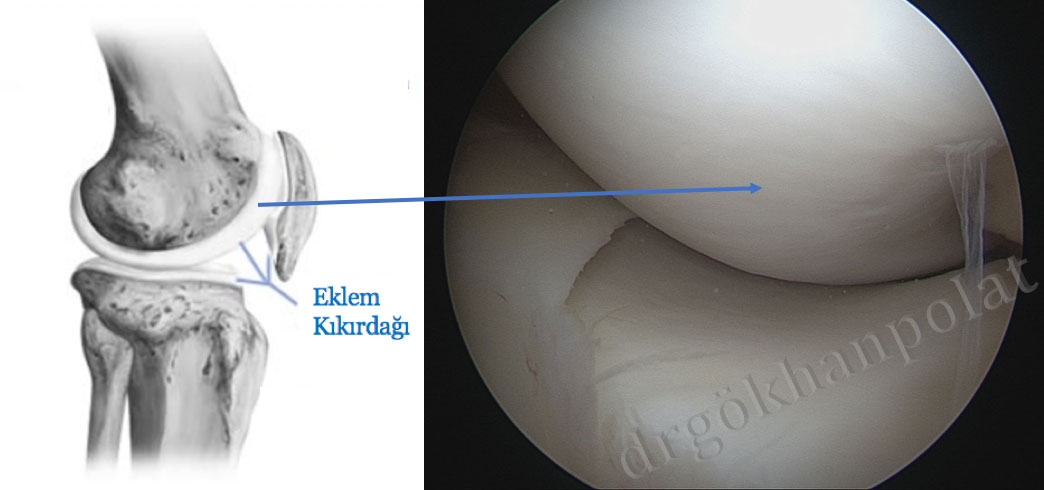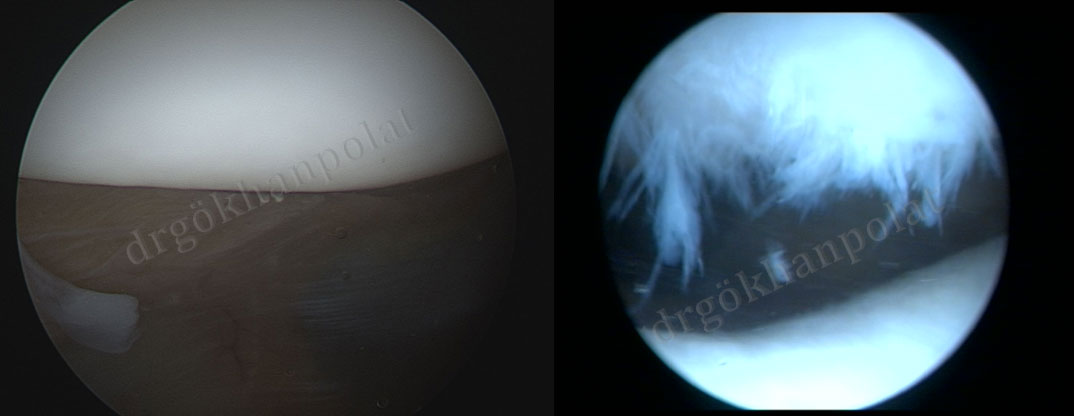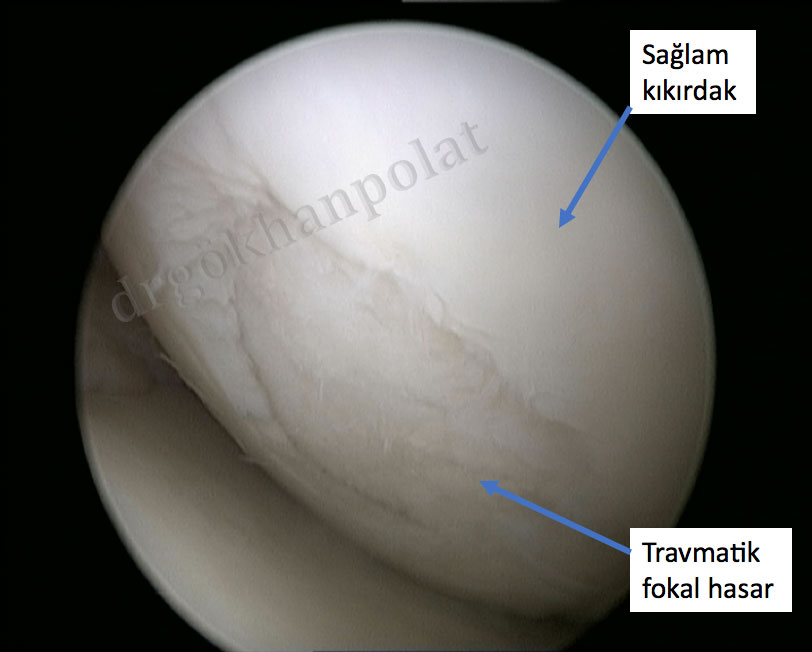- Mon - Sat: 9:00
- Call Us: +90 (538) 894 00 91
- [email protected]

Cartilage Diseases
Joint cartilage, due to its biological properties, allows for smooth, low-friction, and painless movement in our joints. Since joint cartilage does not contain any vascular or neural structures, its unique histological structure and limited healing capacity make it susceptible to degenerative (wear-related) or traumatic cartilage diseases. Consequently, many types of cartilage damage may occur throughout our lives due to aging or mechanical trauma from daily or sports activities.

Figure 1: Arthroscopic view of a healthy cartilage structure in the knee joint.
Generally, cartilage diseases are evaluated in two main categories: degenerative and traumatic.
Degenerative cartilage damage develops over the years and often affects the joints more diffusely rather than in a localized area. In early stages, it may affect only a portion of the cartilage layer, but over time it can progress to involve all cartilage layers.
In traumatic injuries, additional damage such as ACL tears or patellar dislocations often accompany the cartilage damage. In these cases, usually a localized (focal) area is affected, but the damage may extend to the entire cartilage layer or even to the subchondral bone beneath it.
Degenerative cartilage diseases mostly affect middle-aged individuals (40-60 years). Treatment decisions are based on the patient’s age, functional activity expectations, and the stage of the disease.
Non-surgical treatments such as medications that reduce pain and inflammation, physical therapy and rehabilitation, and activity modifications can be effective. Additionally, to slow down the degenerative process in the joint cartilage, joint injections and nutraceutical supplements (like glucosamine and chondroitin) can be used.
Intra-articular injections are commonly preferred in the treatment of degenerative cartilage diseases. These injections may include platelet-rich plasma (PRP), hyaluronic acid, cytokine, or peptide-containing products. For more information, see joint injections.

Figure 2: View of the patellar cartilage in the knee joint. The left shows healthy cartilage, while the right shows cartilage from a patient with widespread stage 3 chondropathy due to degenerative disease.
When the body's natural healing mechanisms are insufficient after a traumatic cartilage injury, symptoms such as pain and swelling can occur. In such cases, the location of the damaged area (inner or outer side of the knee, femur or tibia joint surface), its size, time elapsed since the injury, and the patient's age are all important factors in determining treatment.

Figure 3: Arthroscopic view of traumatic cartilage damage on the femoral condyle of the knee joint.
This technique is used for small, full-thickness cartilage lesions (smaller than 2 cm²). During arthroscopic surgery, dead tissue in the lesion area is removed. Small holes are created in the subchondral bone to allow bleeding and the arrival of bone marrow-derived stem cells. This stimulates the formation of a reparative tissue called fibrocartilage in the lesion site. It is quite effective for small lesions.
This method is applicable for lesions up to 4 cm² involving the subchondral bone. Cylindrical plugs of bone and cartilage are taken from non-weight-bearing areas of the knee and transplanted to the damaged area to treat the cartilage lesion.
This cell-based treatment is used for lesions larger than 4 cm². Healthy cartilage cells are harvested from the knee in the first surgery and sent to the lab. These chondrocytes are cultured and multiplied over 4–6 weeks and then applied to the lesion area in a second operation to regenerate new cartilage tissue.
Scaffolds are biological products placed in the defect area to guide the healing cells. They help the cells differentiate into chondrocytes and promote extracellular matrix production. This technique is used in the treatment of certain cartilage lesions.
To enhance tissue quality in cartilage repair, scaffolds can be combined with mesenchymal stem cells. This approach can result in higher-quality tissue regeneration in the damaged area.
Bone-cartilage tissue pieces obtained from cadavers are processed and stored as fresh-frozen grafts. They can be used in patients with large cartilage lesions where other treatment methods are not suitable. This method is particularly valuable for complex cases.